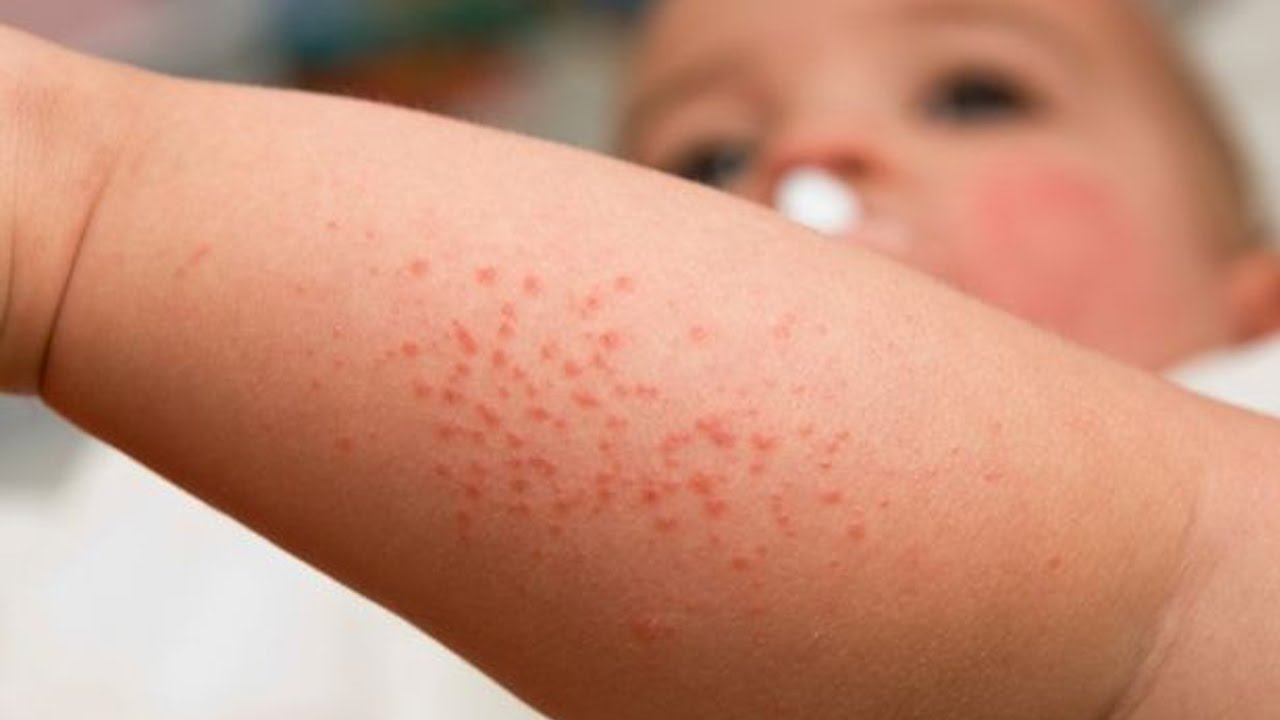Prickly heat, also known as miliaria rubra, is an itchy rash of small, raised red spots that causes a stinging or prickling sensation on the skin.
Prickly heat can develop anywhere on the body, but it usually appears on your face, neck, back, chest or thighs a few days after exposure to hot temperatures.
The rash is made up of tiny spots or bumps that are surrounded by an area of red skin.
The spots sometimes look like tiny blisters and can cause:
mild swelling
a stinging or intense prickling sensation
Causes of prickly heat
Prickly heat usually develops when a person sweats more than usual, such as during hot or humid weather. However, it’s also possible to get prickly heat in the winter.
The condition is caused when the body’s sweat glands become blocked. Excessive sweating can result in sweat becoming trapped beneath your skin. The trapped sweat causes skin irritation and the characteristic heat rash.
The symptoms of prickly heat are usually worse in areas that are covered by clothing. This is because clothing can make you sweat and sometimes causes friction (rubbing).
Who gets prickly heat?
Although anyone can get prickly heat, you’re more at risk of developing it if you’re in a hot climate where you sweat more than usual.
The following also increase your risk:
illness and immobility – long periods of time spent in bed can make you sweat more, particularly if you have warm bedding
wearing too much clothing, particularly in the winter
sitting too close to a fire or heater
being overweight or obese – which is more likely to lead to excessive sweating
Babies and children are also more at risk of getting prickly heat, because their sweat glands aren’t fully developed.
Treating prickly heat
Prickly heat isn’t a serious condition and rarely requires any specific treatment. The rash usually disappears after a few days.
However, there are several things you can do to ease your symptoms:
Avoid excessive heat and humidity – if you need to go outside, spend time in the shade or take a small fan with you. Further exposure to the heat will cause you to sweat more and may make your rash worse. Drink plenty of fluids to avoid dehydration, especially in hot weather.
Wear loose cotton clothing – avoid wearing synthetic fibres, such as polyester and nylon, which trap heat easier than natural fibres.
Keep your skin cool – a cool bath or shower will cool you down, soothe your skin and help prevent further sweating. Staying in an air-conditioned room for a few hours a day will also provide considerable relief. You can also use a cold compress, but don’t leave it on the skin for longer than 20 minutes.
Use calamine lotion – this is available at most pharmacies and will help soothe sore and irritated skin.
Try hydrocortisone cream – low-strength hydrocortisone cream is also available from pharmacies and is effective at treating very itchy and irritated areas of skin. However, avoid using it on your face and always follow the instructions.
Antihistamine tablets may help control itching – but consult your GP first as they’re not always suitable
Read more about staying safe in the sun.
Babies and rashes
If your baby has a rash and appears to be unwell, you should visit your GP or contact NHS 111.
Prickly heat is common in babies and doesn’t cause any serious harm. However, if you’re concerned, your GP will be able to confirm the cause of your baby’s rash and give appropriate treatment.
Read more about skin rashes in babies.
